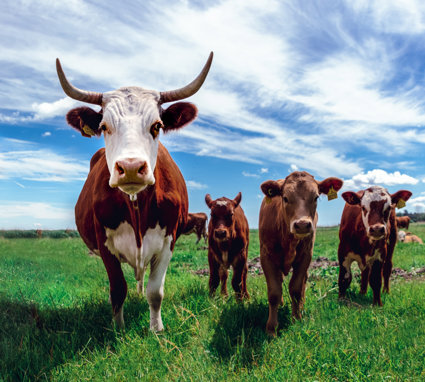
Where does food come from?
Where does the food we eat in the UK come from?
Key questions
What are processed foods made from?
What are the two principle types of farming?
Where does the food we eat in the UK come from?
In the past, people mainly grew or bought food in its raw, unprocessed state - everyone knew what a potato looked like. Today, a very high percentage of food eaten in western countries is processed into convenience food or ready meals. Leading supermarkets such as Tesco and Sainsburys have aisles dedicated to different types of ready-made meals - from beef stroganoff to chicken korma.
In many cases, the food is already cooked for us. Increasingly, young people in the UK and similar countries have become disconnected with food production and have little understanding of how or where our food is produced.
Farmers in general will concentrate on specializing in crops or animals that are best suited to their physical environment and the local/national (or even global) economic conditions. Arable farms concentrate on growing fruit, vegetables and salad crops. In the UK, these are concentrated in the east and south of the country. Pastoral farmers concentrate on rearing animals or birds for their meat, milk, eggs or skins. In the UK, these farms are more numerous in the north and west.
The UK has never been 100% self-sufficient in food production simply because of our desire to eat foods that cannot physically be grown in our climatic conditions. In the last 50 years, the amount of food imported into the UK has grown - currently about 40% of our food is imported (Department for Environment, Food and Rural Affairs). An additional factor has been the desire to have all kinds of food available throughout the seasons, for example strawberries in winter, which are frequently imported from Spain. See the lesson La Producción de Fresa en España (Strawberry production in Spain) in the Geography the Language of Europe unit, for more information on this.
Starter
Favourite food items
Note down your five favourite food items (pairs are allowed, for example fish and chips). In class build up a master list. How diverse is this list? Are there clear favourites?
Individually or in pairs, choose two food items from your list and note down the main raw foodstuffs that that they are made from. For example crisps are made from potatoes. To help with this begin by completing the what am I eating? PowerPoint activity. Perhaps some of your own choices feature in this activity.
Main Activity
Arable and pastoral farming
The large majority of the food we eat is made up of raw ingredients grown by farmers from the UK and across the world. There are two main types of farming - arable and pastoral. Have a go at the arable and pastoral PowerPoint activity which will help you identify and understand the differences between these two types of farming.
Once you have completed this activity pick two of your top five favourite food items write a paragraph about each explaining whether the production of each item involves pastoral or arable farming or both. Think carefully about all the different food products that they are made from. Share your ideas with the rest of the class.
Plenary
Exploring the origins of unusual food items
Refer to the master list of your class favourite food items. You might eat some of these everyday, but perhaps other items are unfamiliar to you.
In pairs think of two unusual food items you like, or that you would like to try. Explain what these are to the rest of the class. What are they made of and where do they come from?
As a class complete either the fruit and veg quiz or the multiethnic food quiz. How many of these foods have you eaten? Where did you try them?
File nameFiles
File type
Size
Download